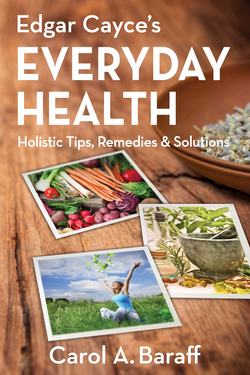Читать книгу Edgar Cayce's Everyday Health - Carol Ann Baraff - Страница 12
На сайте Литреса книга снята с продажи.
A Blueberry a Day
ОглавлениеMost of us will probably recall childhood berry-picking expeditions with pleasure—even if we did sometimes end up being chased by bees! At the time it was our taste buds that drove us outdoors to search for some of nature’s more exotic sweets. Now it seems that the little morsels are good for us too.
Referring to berries in general as “nature’s sugars,” the Edgar Cayce readings recommended them for various reasons: to provide the diet with “. . . as much of iron as possible . . .” (4889-1), to “. . . not only . . . purify but clarify general conditions for the body” (1179-7), to serve as a food that is “. . . very high in the adding of B complex . . .” (3285-1), or to “. . . lend energy to nerve building forces and those that give to the blood force the eliminating properties . . .” (4730-1)
Statements such as these are fascinating enough, but when Cayce goes on to mention certain kinds of berries, the jam really thickens. Consider the following rather futuristic comment about blueberries found in reading 3118-1:
In the diet—keep to those things that heal within and without . . . and especially use the garden blueberry. (This is a property which someone, some day, will use in its proper place!)
Exactly which healing properties the readings have in mind here are not known, but the health benefits of blueberries are definitely in the news these days. The discovery some years ago of truly stunning antioxidant properties has received the most publicity. In a study conducted by the US Department of Agriculture’s Center for Aging at Tufts University of the antioxidant content of more than forty fruits and vegetables, blueberries soared above the rest.13 This is important because antioxidants are believed to help slow the aging process by destroying free radicals produced during metabolism. Free radicals are responsible for cellular damage associated with cancer, heart disease, arthritis, and the aging process.
The study, which used aging rats as subjects, noted improvements in balance, coordination, and short-term memory. The daily dosage would be the human equivalent of about half a cup—an amount with an antioxidant punch of 1,771 International Units of Vitamin E (about sixty times the RDA) and 1270 milligrams of Vitamin C (more than twenty-one times the RDA.)
The primary antioxidants in blueberries and their close cousin, bilberries, are anthocyanins, the flavonoid compounds that give them their color. This means that while blue is good, bluer is better. So, as the neutraceutical importance of cultivated berries grows, it seems that the darker wild berries will retain the most antioxidant properties.
For those who need still more encouragement to head for the produce department or better yet, a sunny meadow, other studies point to many additional health benefits. These claim that blueberries are strongly anticarcinogenic, promote urinary tract health, improve eyesight, and may also assist in cases of arthritis, angina, and diarrhea.
With blueberries winning the healthy produce prize, what are its strongest contenders? Interestingly enough, second place goes to Cayce-recommended Concord grape juice, with about two-thirds the antioxidant activity, followed by garlic, kale, strawberries, and spinach. All are great ways to chase the doldrums away, but by far the best is to find one’s own special source of scrumptious dark “blues.”
